Plot a graph showing variation of de Broglie wavelength λ versus 1/√v where V is accelerating potential for two particles A and B carrying same charge but of masses m1 m2 m1 > m2. Which one of the two represents a particle of smaller mass and why ?
As the charge of two particles is same thereforeHence particle with lower mass m2 will have greater slope.
Related Solutions
Plot a graph showing variation of de-Broglie wavelength lambda versus (1)/( sqrt(V)) , where V is accelerating potential for two particles A and B carrying same charge but of masses m_(1),m_(2),(m_(1) gt m_(2)) . Which one of the two represents a particle of smaller mass and why ?
View SolutionPlot a graph showing variation of de-Broglie wavelength lamda versus 1/sqrtV , where V is accelerating potential for two particles A and B carrying same charge but of masses m_1, m_2 (m_1gt m_2) . Which one of the two represents a particle of smaller mass and why?
View SolutionPlot a graph showing variation of de-broglie wavelength versus , where V is accelerating potential for two particle A and P carrying same charge but of masses . Which one of the two represents a particle of smaller mass and why?
View SolutionPlot a graph showing variation of de-broglie wavelength lambda versus 1//sqrtV , where V is accelerating potential for two particle A and P carrying same charge but of masses m_1 and m_2(m_1gtm_2) . Which one of the two represents a particle of smaller mass and why?
View SolutionTwo lines, A and B, in the plot given below show the variation of de-Broglie wavelength, versus , where V is the accelerating potential difference, for two particles carrying the same charge. Which one of two represents a particle of smaller mass?
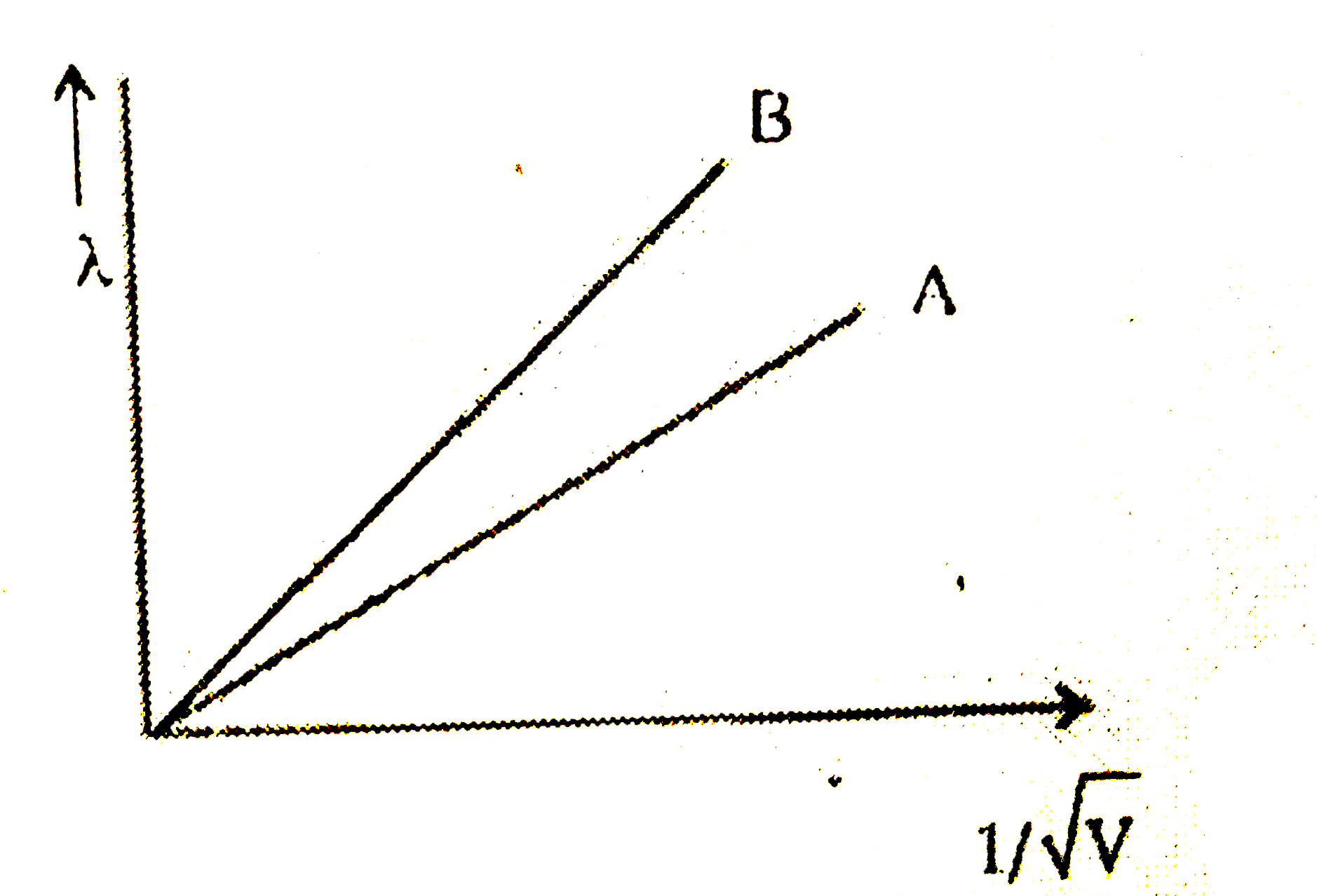
View SolutionTwo lines, A and B, in the plot given below show the variation of de-Broglie wavelength, lambda versus 1//sqrt(V) , where V is the accelerating potential difference, for two particles carrying the same charge. Which one of two represents a particle of smaller mass?
View Solution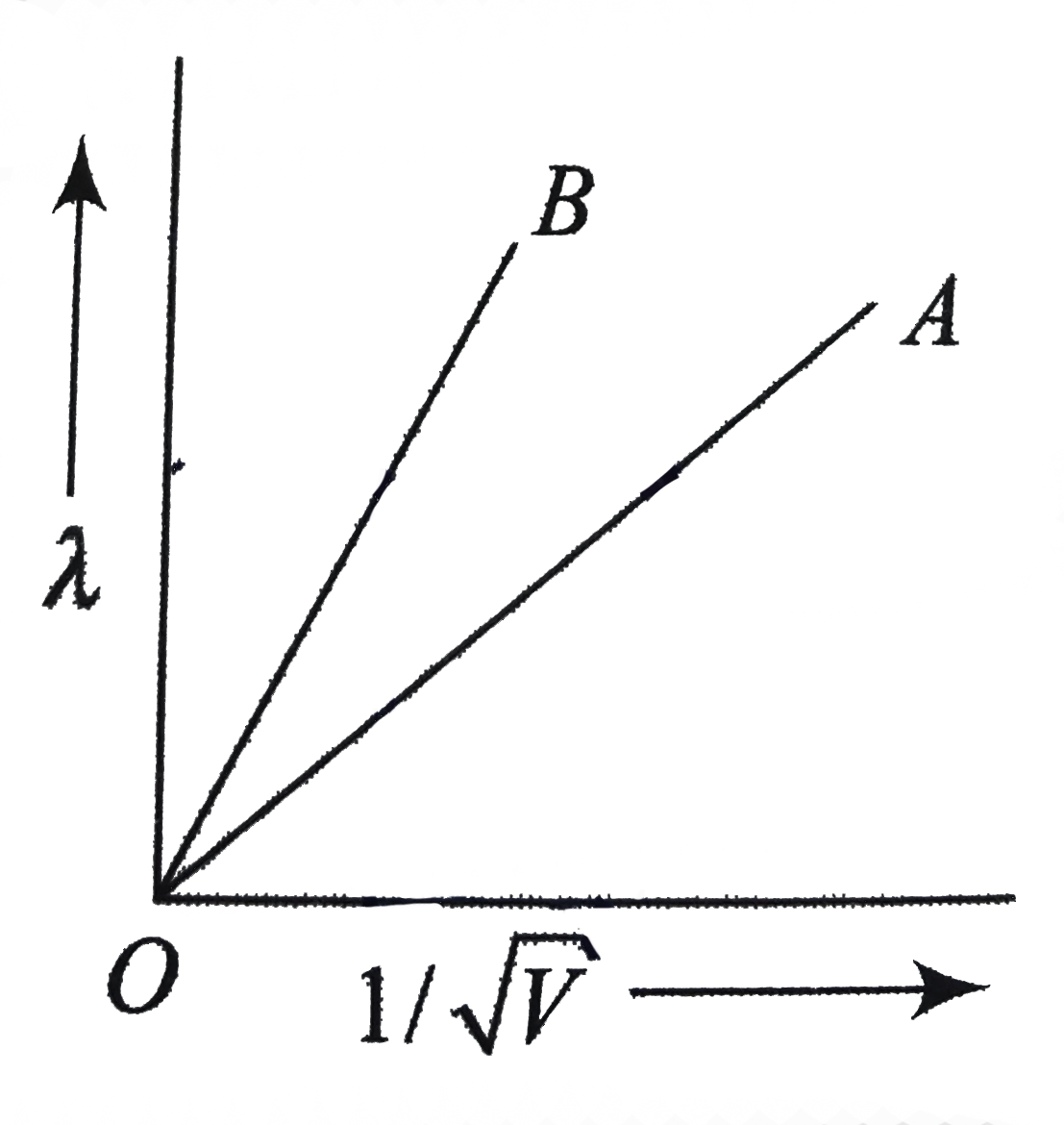
The two lines A and B in fig. shows the plot of de- Broglie wavelength as a function of (V is the accelerating potential) for the particles having the same charge. Which of the two represents the particle of heavier mass?
View SolutionPlot a graph showing variation of a de Broglie wavelength associated with a charged particle of mass m, verses , where V is the potential difference thrugh which the particle is accelerated.
View Solutionde Broglie wavelengths of two particles A and B are plotted against , where V is the potential on the particles. Which of the following relation is correct about the mass of the particles ?
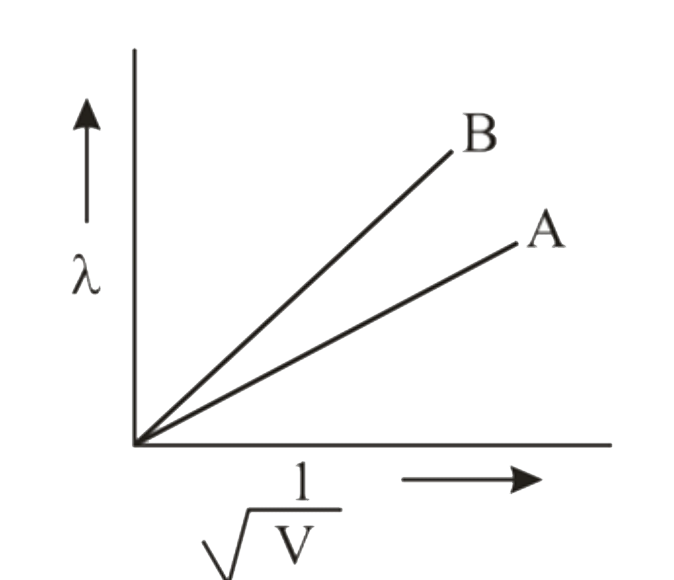
View SolutionDefine gravitational potential energy and derive an expression for it associated with two particles of masses m1 and m2.
View SolutionA stationary particle explodes into two particle of masses m1 and m2 and move in opposite directions with velocities v1 and v2.The ratio of their K.E is
View SolutionFigure shows a plot of where V is the accelerating potential. The de-Broglie wavelength 'λ' in the case of two particles having same charge 'q' but different masses m, and mz. Which line (A or B) represents a particle of larger mass ?
View SolutionThe two lines shown in Fig. 17.20, for two particles with uniform charge, give de Broglie wavelength. lambda Of 1//sqrt(V) (V is the accelerator potential) is a graph as a function of. Which of these lines represents a particle with more mass?
View Solutionof two particles A and B are plotted against de-Broglie wavelengths. where V is the potential on the particles. Which of the following relation is correct about the mass of particles?
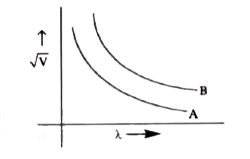
View SolutionThe two lines A and B in fig. shoe the phot of de Broglie wavelength (lamda) as a function of (1)/(sqrtV) (V is the accelerating potential) for teo particles having the same charge. Which of the two represents the particle of heavier mass?
View SolutionPlot a graph showing variation of a de Broglie wavelength (lamda) associated with a charged particle of mass m, verses 1//sqrtV , where V is the potential difference thrugh which the particle is accelerated. How does this graph give us the information the magnitude the magnitude of the charge of the particle ?
View Solutionदिए गए प्लॉट (Plot) में दो रेखाएँ A और के विरुद्ध दे ब्रॉग्ली तरंगदैर्घ्य में परिवर्तन को प्रदर्शित करते है, जहाँ समान आवेश वाले दोनों कणो के लिए त्वरक विभवांतर है। दोनों में से कौन-सी रेखा कम द्रव्यमान वाले कण को प्रदर्शित करती है ।

View SolutionA smooth ring of mass connected with a hanging block of mass by a long inextensible string, is released from rest. The ring moves vertically along a fixed rigid rod as shown in figure. Describe the motion of the ring if
(A)
(B)
(C )
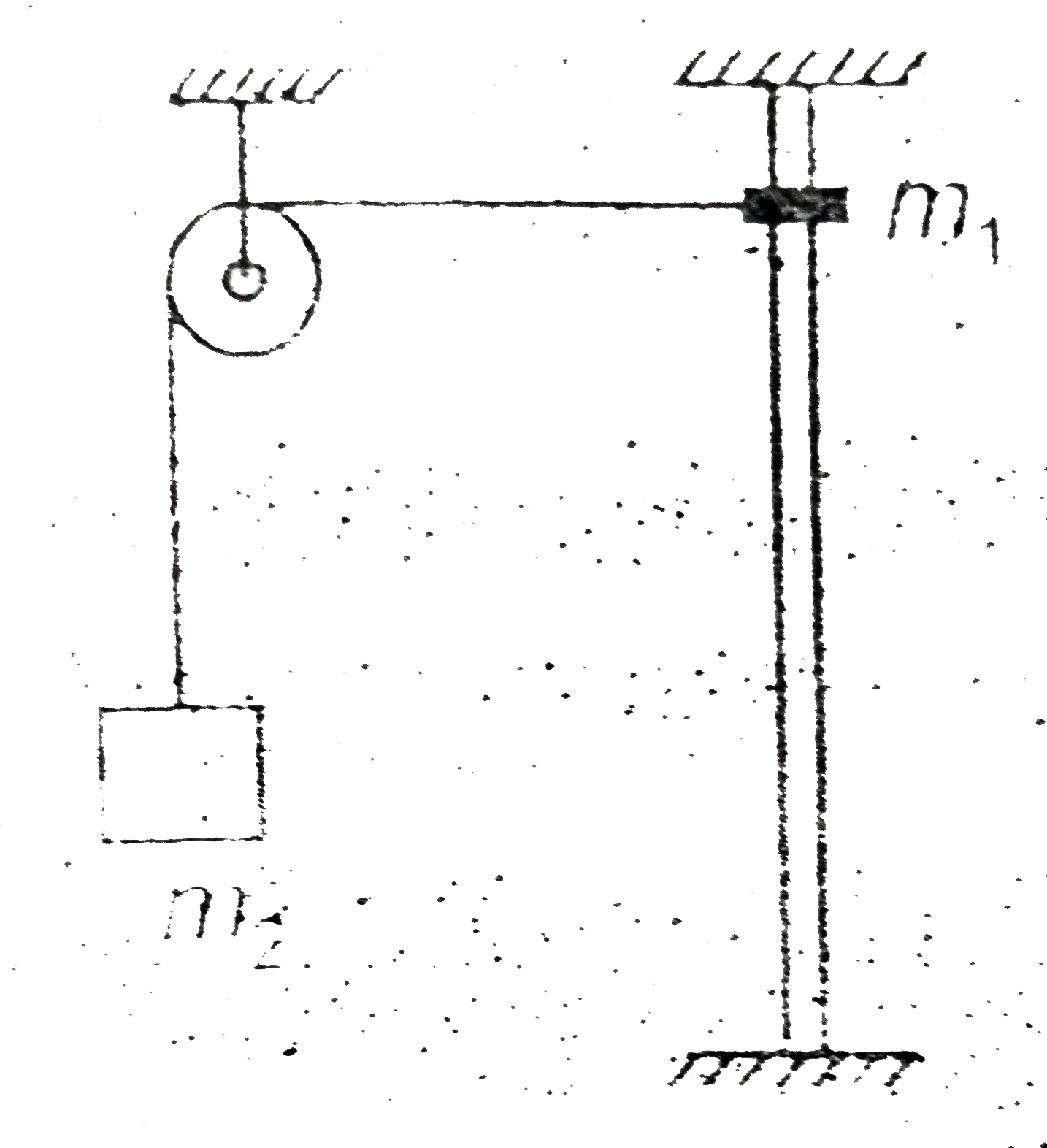
View SolutionThe two lines A and B shown in the graph plot the de Broglie wavelength as a function of (V is the accelerating potential) for two particles having the same charge which of the two represents the particle for heavier mass? Write down Eienstein’s equation in photoelectrie effect.
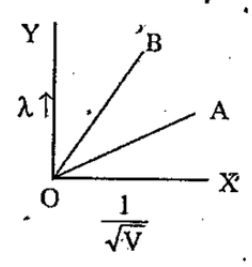
View Solutionद्रव्यमान m तथा आवेश q के एक कण को V विभव द्वारा त्वरित किया जाता है। कण का डी ब्रोग्ली तरंगदैर्घ्य होगा
View Solution